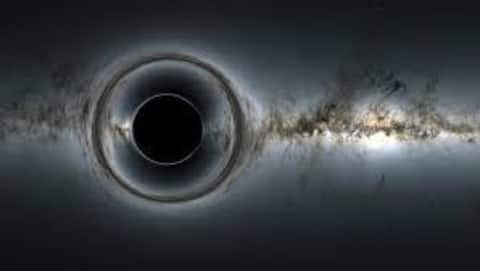How big are supermassive black holes? NASA's animation provides answer
What's the story
Supermassive black holes lie at the center of all large galaxies, including the Milky Way. These cosmic objects weigh between 100,000 and tens of billions of times the mass of the Sun. If you have ever wondered just how big these celestial objects are, a new animation from NASA, might give the answer you are looking for.
Black holes
What are supermassive black holes?
A black hole is a point in space where the gravitational force is so powerful that nothing, not even light can escape. The gravitational pull is so strong because matter has been squeezed into a tiny space. These astronomical objects can form due to dying stars. The largest black holes found in the universe are dubbed "supermassive."
Official words
Over 100 supermassive black holes have been confirmed to exist
Direct measurements, many of which were made with the help of the Hubble Space Telescope, "confirm the presence of more than 100 supermassive black holes," said Jeremy Schnittman, a theorist at NASA's Goddard Space Flight Center. "How do they [supermassive black holes] get so big? When galaxies collide, their central black holes eventually may merge together too," explained Schnittman.
Animation
The animation also features a black hole in Milky Way
The new animation dropped by NASA shows 10 supermassive black holes, lurking at the center of their host galaxies, scaled by the sizes of their shadows. The clip also features a black hole in the Milky Way galaxy. Starting from the Sun, the video clip steadily zooms out to compare the sizes of black holes to different objects in the solar system.
Detail
Black hole found in Milky Way is called Sagittarius A*
First seen in the animation is a dwarf galaxy, dubbed J1601+3113. The black hole found in this galaxy has a mass of 100,000 Suns. The latter portion of the clip features a black hole at the center of the Milky Way called Sagittarius A*, which has a weight of about 4.3 million Suns. This black hole's shadow measures roughly half of Mercury's orbit.
Monster black holes
The clip show two black holes in galaxy NGC 7727
The clip also shows two black holes in the galaxy NGC 7727. The cosmic objects lie roughly 1,600 light-years apart. One black hole measures about six million solar masses, a unit of mass used in astronomy, and the other weighs over 150 million Suns. Astronomers expect the pair of black holes to merge within the next 250 million years.
Information
TON 618 is among the most distant black holes
The clip concludes with TON 618, which is among the most distant and massive black holes. "This behemoth contains more than 60 billion solar masses, and it boasts a shadow so large that a beam of light would take weeks to traverse it," said NASA.
